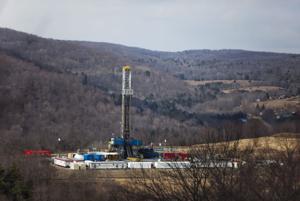What Patagonia Did When It Found Human Slaves in Its Supply Chain
Here's how the socially-conscious retailer turned a rare misstep into an opportunity to change worker conditions in its supply chain.
 By Anna Hensel
By Anna Hensel
"We quite frankly discovered modern slavery in our supply chain," says Adam Fetcher, Patagonia's global director of PR. He adds that the problem is pervasive and plagues manufacturers of all kinds in many industries. "For Patagonia, it became an urgent priority to fix it," he says.
In a
blog post, the outdoor outfitter says that it first became aware of mistreatment of its factory workers after extending its "social responsibility audits" to include its Tier 2 suppliers in 2011. Looking specifically at the conditions of migrant workers in its factories in Taiwan, Patagonia discovered that many migrant workers were subject to long hours, low wages, and enormous broker fees.
Migrant workers have long had
a tumultous history in Taiwan. Over the past 30 years, Taiwan has been losing factory business to China, where labor costs are much lower. As a result, factory owners in Taiwan have started to hire migrant workers over locals. Local workers were further thwarted when the Taiwanese government passed a law in 2012 permitting companies to have a workforce of up to 40 percent migrant workers, a 5 percent increase from the previous cap.
Patagonia partnered with Verite, a NGO that focuses on securing fair working conditions for workers around the world, to implement changes in its supply chain. As of June 1, Patagonia's Taiwanese suppliers can no longer require migrant workers to pay broker fees to secure a job. They must also repay current workers affected by broker fees. Going forward, factory owners either have to pay the fee themselves, or find workers without using a broker. The company also wrote a guide outlining its
new employment standards for migrant workers, displaying it on Patagonia's website, and held meetings with Taiwanese suppliers to explain the new changes.
This isn't the first time Patagonia has highlighted its problems on its company blog--it acknowledged
using a Durable Water Repellent in its jackets that had toxic byproducts for years. Still, it's a rare misstep for the typically-polished company. And while it seems to have taken a few too many years to address the oversight, the company's effort to address its supply chain is admirable--and serves as a lesson for other entrepreneurs who must cope with similarly systemic shocks.
That pledge has paid off in the eyes of some big players. In January, the retailer's Chief Operating Officer, Doug Freeman, and Director of Social Environmental Responsibility Cara Chacon were asked to present on the company's work at the White House Forum on Combating Human Trafficking in Supply Chains. By acknowledging its mistakes to customers, Patagonia has proven that its commitment to social issues doesn't just start and end in the store.
Published on: Jun 3, 2015












